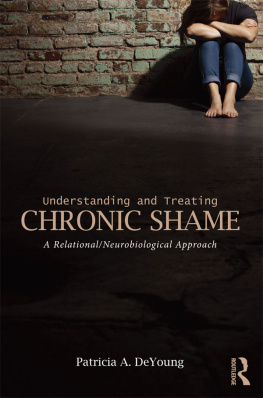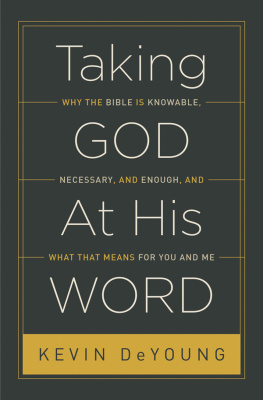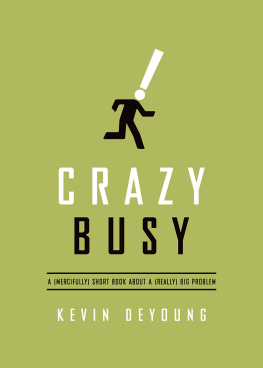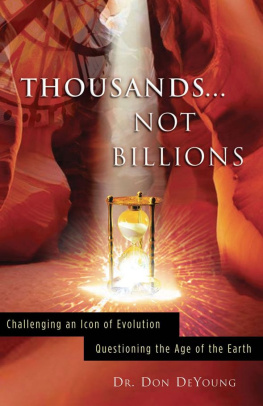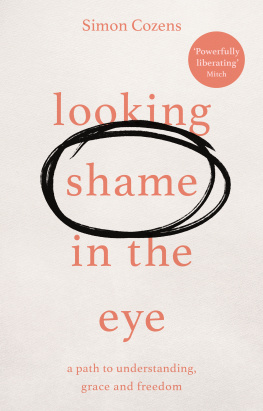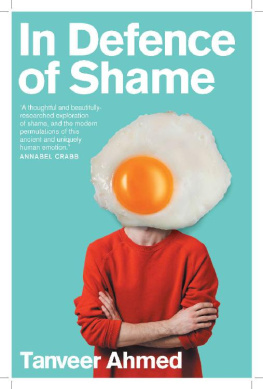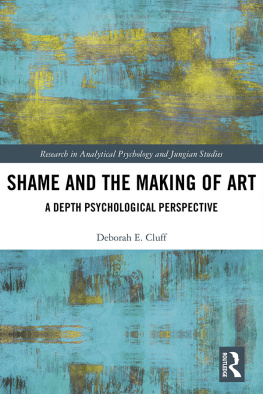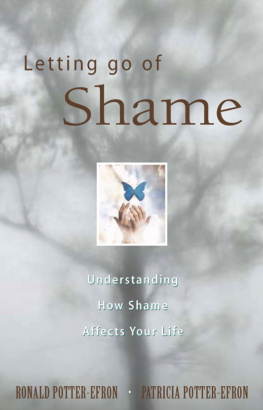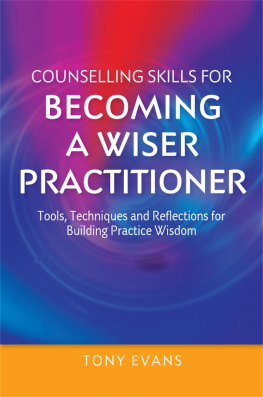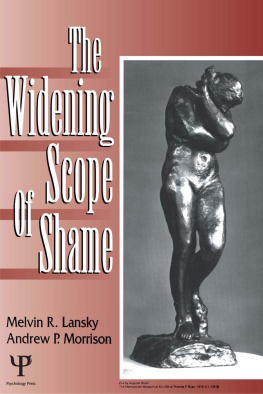Shame is indeed a phenomenon that is both in the brain, the mind, and in the space between us. Dr DeYoung does a solid job in addressing the challenges of living with and treating chronic shame using a thoughtful, humane, and scientific approach.
Louis Cozolino, PhD, professor of psychology at Pepperdine Universitys Graduate School of Education and Psychology
Beginning with diverse clinical vignettes with very dissimilar diagnoses, Patricia DeYoung tackles the unvoiced but powerful presence of shame that so often lies at the unspoken core of what troubles our clients. She beautifully and evocatively gives voice and shape to the annihilating impact of lack of attunement. DeYoung also makes the point that because shame takes root in relationship, we must heal it relationally. Equally important, she reminds us that, to be effective in this work, therapists must engage in their own ongoing internal work. This special book needs to be read by all of us.
Patricia L. Papernow, EdD, instructor in psychology at Harvard Medical School and author of Surviving and Thriving in Stepfamily Relationships
Defining shame as first and foremost a relational experience, Patricia DeYoung unpacks the extensive, damaging consequences of feeling chronically shamed while illustrating effective treatment in clear, accessible language. For clinicians who wish to understand and treat shame from the psychodynamic perspective, this book is a vital resource.
Martha Sweezy,
PhD, associate director and director of training for the dialectical behavioral therapy program at Harvard Medical Schools Cambridge Health Alliance
Understanding and Treating Chronic Shame
Chronic shame is painful, corrosive, and elusive. It resists self-help and undermines even intensive psychoanalysis. Patricia A. DeYoungs cutting-edge book gives chronic shame the serious attention it deserves, integrating new brain science with an inclusive tradition of relational psychotherapy. She looks behind the myriad symptoms of shame to its relational essence. As DeYoung describes how chronic shame is wired into the brain and developed in personality, she clarifies complex concepts and makes them available for everyday therapy practice.
Grounded in clinical experience and alive with case examples, Understanding and Treating Chronic Shame is highly readable and immediately helpful. Patricia A. DeYoungs clear, engaging writing helps readers recognize the presence of shame in the therapy room, think through its origins and effects in their clients lives, and decide how best to work with those clients. Therapists will find that Understanding and Treating Chronic Shame enhances the scope of their practice and efficacy with this client group, which comprises a large part of most therapy practices. Challenging, enlightening, and nourishing, this book belongs in the library of every shame-aware therapist.
Patricia A. DeYoung, MSW, PhD, is a relational psychotherapist, clinical supervisor, and a founding faculty member of the Toronto Institute for Relational Psychotherapy.
First published 2015
by Routledge
711 Third Avenue, New York, NY 10017
and by Routledge
27 Church Road, Hove, East Sussex BN3 2FA
Routledge is an imprint of the Taylor & Francis Group, an informa business
2015 Patricia A. DeYoung
The right of Patricia A. DeYoung to be identified as author of this work has been asserted by her in accordance with sections 77 and 78 of the Copyright, Designs and Patents Act 1988.
All rights reserved. No part of this book may be reprinted or reproduced or utilised in any form or by any electronic, mechanical, or other means, now known or hereafter invented, including photocopying and recording, or in any information storage or retrieval system, without permission in writing from the publishers.
Trademark notice: Product or corporate names may be trademarks or registered trademarks, and are used only for identification and explanation without intent to infringe.
Library of Congress Cataloging in Publication Data
DeYoung, Patricia A., 1953
Understanding and treating chronic shame: a relational/neurobiological approach/by Patricia A. DeYoung.
pages cm
Includes bibliographical references and index.
1. Shame. 2. Psychotherapist and patient. I. Title.
RC455.4.S53D49 2015
616.8914dc23
2014032939
ISBN: 978-1-138-83119-3 (hbk)
ISBN: 978-1-138-83120-9 (pbk)
ISBN: 978-1-315-73441-5 (ebk)
Typeset in Sabon
by Swales & Willis Ltd, Exeter, Devon, UK
To my adult children,
Adriel, Rowan, and Jason,
and to rewriting legacies of shame
with tenacity and love
CONTENTS
This book has been more than a decade in the making, and so I have had time to test its ideas in countless clinical discussions. I owe thanks to all those colleagues, supervisees, and students who through the years have listened to my thoughts on the presence and power of chronic shame in clients lives and who have offered their ideas in response. It has been my privilege to theorize in a community full of lively talk about the connections between many kinds of clinical theory and the relational practice of psychotherapy.
A few of my colleagues have been closely involved in constructing this particular book. Rozanne Grimard, Jason Winkler, Karen Essex, and Judy Gould, who teach with me at the Toronto Institute for Relational Psychotherapy, read an early version of the text carefully. Their comments were especially useful because of the theory/praxis understanding of relational therapy we share, honed in our joint endeavor to teach an essentially right-brain model of clinical work.
Four other colleaguesBonnie Simpson, David Schatzky, Susan Marcus, and Pat Archerbrought clinical wisdom and writerly sensitivity to their reading of the text. In the responses of all my Toronto readers, I felt understood in my passion to write about the shame we encounter so often in our work and also in ourselves. No one could offer more depth of support than a group of relational psychotherapists! They took my project seriously, and I welcomed their honest challenge to give it the best articulation possible, to peel back my own verbiage until I could find with clarity what must be said.
Over the years, I started the book in at least four different ways, looking for a key concept that would bring meaningful coherence to a welter of material on shame. As I explain in the text, the theoretical key fell into my hand just over a year ago at an Allan Schore conference on the practice of right brain therapy. I wrote some new chapters quickly and gave them to my daughter, Adriel Weaver, to read. Though not a therapist, she is an accomplished legal and academic writer, and I am grateful for her help in thinking through opening issues of audience, voice, and tone. Im also pleased that she made time to edit a final version of the text after all the substantive changes had been made.
Help came from far as well as near: I would like to thank Anna Moore, my editor at Routledge, for her encouragement to write this book ahead of the project she had first requested and for her reliable, reassuring presence just an email click away. I trust her intention to give the book the best life possible out in the world. Routledge review readers were helpful; I would especially like to mention Patricia Papernow, a therapist/writer I have never met but who gifted me with detailed attention to the first half of the text and valuable help in peeling away verbiage.
Clearly, many eyes and hands have been on this book to shape it into something useful. In its pages I also refer to dozens of theorists, past and present, who have influenced the shape and direction of my thought. But although I have benefitted from so much collegial conversation, both actual and virtual, I also need to say that this particular take on understanding and treating chronic shame is mine, and I take responsibility for how it now goes out into the world.
Next page
